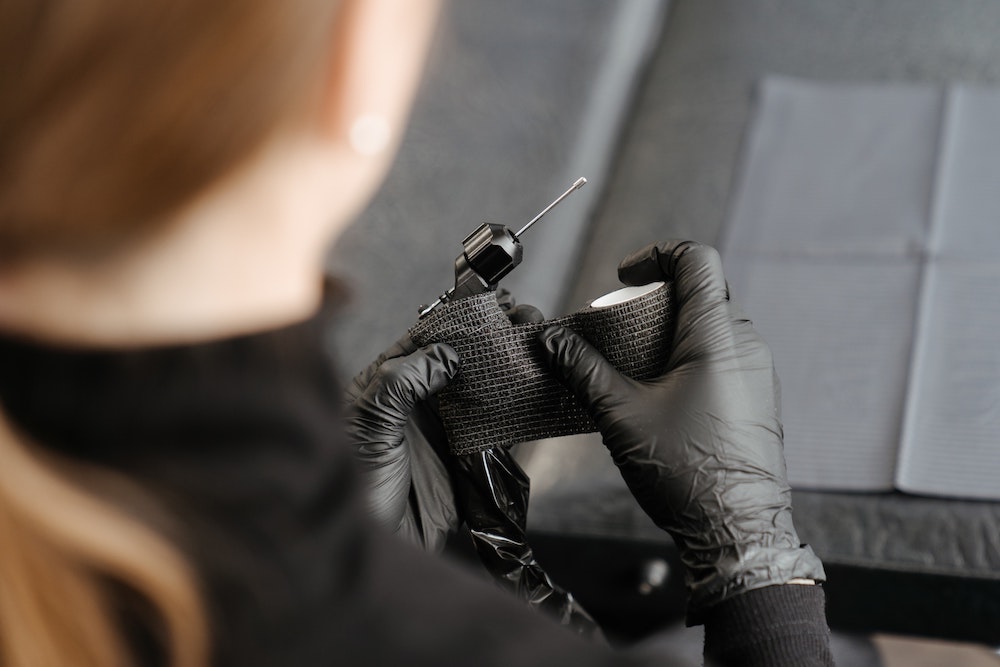Discover how dermarolling for hair can promote hair growth, and learn how to properly perform the procedure at home. Get the comprehensive guide here.
Dermarolling, also known as microneedling, is a popular cosmetic procedure that involves using a device covered in tiny needles to puncture the skin. While it has long been used to treat acne scars and wrinkles, it is now gaining popularity as a treatment for hair loss. In this article, we will explore the science behind dermarolling for hair, how to do it properly, and what to expect from the treatment.
Hair loss affects millions of people worldwide, and can be caused by a variety of factors, including genetics, age, hormonal imbalances, and autoimmune disorders. While there are many treatments available, from medications to hair transplants, they can be expensive and may not work for everyone. Dermarolling is a relatively low-cost and non-invasive option that has shown promise in promoting hair growth.
Table of contents
- What is Dermarolling?
- How Does Dermarolling for Hair Work?
- What are the Benefits of Dermarolling for Hair?
- Who Can Benefit from Dermarolling for Hair?
- How to Prepare for Dermarolling for Hair
- How to Perform Dermarolling for Hair
- What to Expect During and After Dermarolling for Hair
- How Often Should Dermarolling for Hair be Done?
- Are There Any Risks or Side Effects of Dermarolling for Hair?
- Other Hair Growth Treatments to Consider
- References
What is Dermarolling for Hair?
Dermarolling is a cosmetic procedure that involves rolling a small device covered in tiny needles over the skin. The needles create tiny punctures in the skin, which stimulate the body’s natural healing response. This can lead to increased collagen production, improved skin texture, and reduced appearance of scars and wrinkles.
How Does Dermarolling for Hair Work?
When used on the scalp, dermarolling can stimulate hair follicles and promote hair growth. The punctures created by the needles increase blood flow to the scalp, which delivers essential nutrients to the hair follicles. This can lead to thicker, healthier hair over time.
What are the Benefits of Dermarolling for Hair?
One of the main benefits of dermarolling for hair is that it is a non-invasive and relatively painless procedure. It can be done at home with a dermaroller device, which is affordable and widely available. In addition, dermarolling can promote hair growth without the use of drugs or chemicals, which may have side effects.
Who Can Benefit from Dermarolling for Hair?
Dermarolling can be beneficial for anyone experiencing hair loss or thinning hair. It is particularly useful for those who are unable or unwilling to undergo more invasive treatments, such as hair transplants. It is also safe for people with sensitive skin and does not have any major side effects.
How to Prepare for Dermarolling for Hair
Before starting a dermarolling regimen, it is important to prepare the scalp properly. This involves washing the hair with a gentle shampoo, avoiding the use of hair products, and disinfecting the dermaroller device. It is also important to avoid using the dermaroller on irritated or broken skin.
How to Perform Dermarolling for Hair
To perform dermarolling for hair, the scalp should be divided into sections and the dermaroller device should be rolled over each section in a specific pattern. The process should be repeated several times, depending on the size of the scalp and the severity of hair loss. It is important to be gentle and not apply too much pressure, as this can cause damage to the skin.
What to Expect During and After Dermarolling for Hair
During dermarolling, it is normal to experience some mild discomfort or tingling sensations. After the procedure, the scalp may be red and slightly swollen, but this should subside within a few hours. It is important to avoid washing the hair for at least 24 hours after dermarolling, as this can irritate the scalp.
How Often Should Dermarolling for Hair be Done?
The frequency of dermarolling for hair depends on the severity of hair loss and individual response to the treatment. Some people may see results after just one session, while others may need to continue the treatment for several months before seeing significant improvements. As a general rule, it is recommended to do dermarolling for hair once a week or every other week.
Are There Any Risks or Side Effects of Dermarolling for Hair?
While dermarolling is generally safe when done correctly, there are some potential risks and side effects to be aware of. These include skin irritation, infection, and bleeding. It is important to use a clean and sterile dermaroller device and to follow proper hygiene practices to minimize the risk of infection. If you experience any pain, swelling, or unusual symptoms after dermarolling, you should consult a healthcare professional.

Hair loss affects millions of people worldwide, and can be caused by a variety of factors, including genetics, age, hormonal imbalances, and autoimmune disorders.
Other Hair Growth Treatments to Consider
While dermarolling for hair can be effective for some people, it is not a one-size-fits-all solution. There are many other treatments available that may be more appropriate depending on the cause and severity of hair loss. These include medications, hair transplant surgery, and low-level laser therapy. It is important to consult with a healthcare professional before starting any new hair growth treatment.
Dermarolling for hair is a promising treatment option for those experiencing hair loss or thinning hair. While it may not work for everyone, it is a non-invasive and relatively low-cost option that can be done at home. By following proper hygiene practices and using a clean and sterile dermaroller device, you can minimize the risks and potential side effects of the treatment. As with any hair growth treatment, it is important to consult with a healthcare professional to determine the best course of action for your individual needs.
References
- Dhurat R, Sukesh M, Avhad G, Dandale A, Pal A, Pund P. A randomized evaluator blinded study of effect of microneedling in androgenetic alopecia: A pilot study. Int J Trichology. 2013;5(1):6-11. doi:10.4103/0974-7753.114701
- Kassir M, Kolluru A, Kubeyinje EP. Microneedling: A Comprehensive Review. Aesthetic Surg J. 2018;38(3):332-341. doi:10.1093/asj/sjx187
- Dhurat R, Mathapati S. Response to Microneedling Treatment in Men with Androgenetic Alopecia Who Failed to Respond to Conventional Therapy. Indian J Dermatol. 2017;62(2):207. doi:10.4103/ijd.IJD_19_17
- Fertig RM, Gamret AC, Cervantes J, Tosti A. Microneedling for the treatment of hair loss? J Eur Acad Dermatol Venereol. 2018;32(4):564-569. doi:10.1111/jdv.14651
- Kim YS, Jeon SH, Jeong KH, et al. Hair Regrowth and Increased Hair Tensile Strength Using the Hair Stimulating Complex by Low-Energy Fractional Microneedle Radiofrequency System. Dermatol Surg. 2019;45(10):1266-1273. doi:10.1097/DSS.0000000000001973
- Dhurat R, Sukesh M, Avhad G, et al. A randomized evaluator blinded study of effect of microneedling in androgenetic alopecia: a pilot study. Int J Trichology. 2013;5(1):6-11. doi:10.4103/0974-7753.114701
- Lanzafame RJ, Blanche RR, Bodian AB, Chiacchierini RP, Fernandez-Obregon A, Kazmirek ER. The growth of human scalp hair in females using visible red light laser and LED sources. Lasers Surg Med. 2014;46(8):601-607. doi:10.1002/lsm.22272
- Trink A, Sorbellini E, Bezzola P, et al. A randomized, double-blind, placebo- and active-controlled, half-head study to evaluate the effects of platelet-rich plasma on alopecia areata. Br J Dermatol. 2013;169(3):690-694. doi:10.1111/bjd.12418
- Rinaldi F, Sorbellini E, Coscera T, et al. Use of platelet-rich plasma in the treatment of androgenetic alopecia: A pilot study. Int J Trichology. 2015;7(4):141-143. doi:10.4103/0974-7753.174500
- Liao H, Ji Q, Zhuang K, et al. Platelet-rich plasma promotes the proliferation of human hair follicle dermal cells by activating Wnt/β-catenin signaling pathway. Exp Ther Med. 2018;15(2):1307-1312. doi:10.3892/etm.2017.5517
- Chat GPT for Flights: Revolutionizing Air Travel with AI - July 25, 2023
- Best Tattoo Artists in Fort Worth: Discover Fort Worth’s Finest - June 28, 2023
- Chat GPT for Mac: Unlocking New Conversations with AI - June 19, 2023


